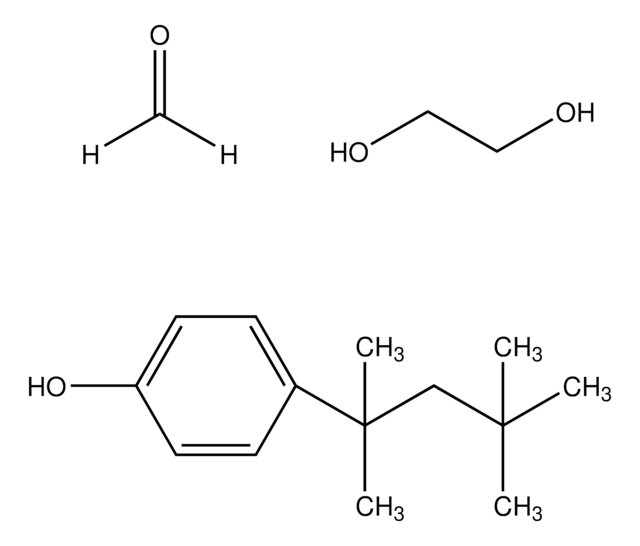5.08162
Loperamide Hydrochloride
Synonym(e):
Loperamide Hydrochloride, µ-Opioid Receptor Agonist, Loperamide Hydrochloride, Imodium
About This Item
Empfohlene Produkte
Assay
≥99% (HPLC)
Qualitätsniveau
Form
solid
Wirksamkeit
2 nM Ki
Hersteller/Markenname
Calbiochem®
Lagerbedingungen
OK to freeze
protect from light
Farbe
white
Löslichkeit
DMSO: 50 mM
ethanol: 50 mM
Lagertemp.
2-8°C
InChI
1S/C29H33ClN2O2.ClH/c1-31(2)27(33)29(24-9-5-3-6-10-24,25-11-7-4-8-12-25)19-22-32-20-17-28(34,18-21-32)23-13-15-26(30)16-14-23;/h3-16,34H,17-22H2,1-2H3;1H
InChIKey
PGYPOBZJRVSMDS-UHFFFAOYSA-N
Allgemeine Beschreibung
Biochem./physiol. Wirkung
u opioid receptor
Warnhinweis
Angaben zur Herstellung
Rekonstituierung
Sonstige Hinweise
Di Bosco, M., et al. 2008. Chem. Biol. Drug Des.71, 328.
DeHaven-Hudkins, D., et al. 1999. J. Pharmacol. Exp. Ther.289, 494.
Mackerer, C., et al. 1976. J. Pharmacol. Exp. Ther.199, 131.
Rechtliche Hinweise
Signalwort
Danger
H-Sätze
Gefahreneinstufungen
Acute Tox. 3 Oral
Lagerklassenschlüssel
6.1C - Combustible, acute toxic Cat.3 / toxic compounds or compounds which causing chronic effects
WGK
WGK 3
Flammpunkt (°F)
Not applicable
Flammpunkt (°C)
Not applicable
Analysenzertifikate (COA)
Suchen Sie nach Analysenzertifikate (COA), indem Sie die Lot-/Chargennummer des Produkts eingeben. Lot- und Chargennummern sind auf dem Produktetikett hinter den Wörtern ‘Lot’ oder ‘Batch’ (Lot oder Charge) zu finden.
Besitzen Sie dieses Produkt bereits?
In der Dokumentenbibliothek finden Sie die Dokumentation zu den Produkten, die Sie kürzlich erworben haben.
Unser Team von Wissenschaftlern verfügt über Erfahrung in allen Forschungsbereichen einschließlich Life Science, Materialwissenschaften, chemischer Synthese, Chromatographie, Analytik und vielen mehr..
Setzen Sie sich mit dem technischen Dienst in Verbindung.




